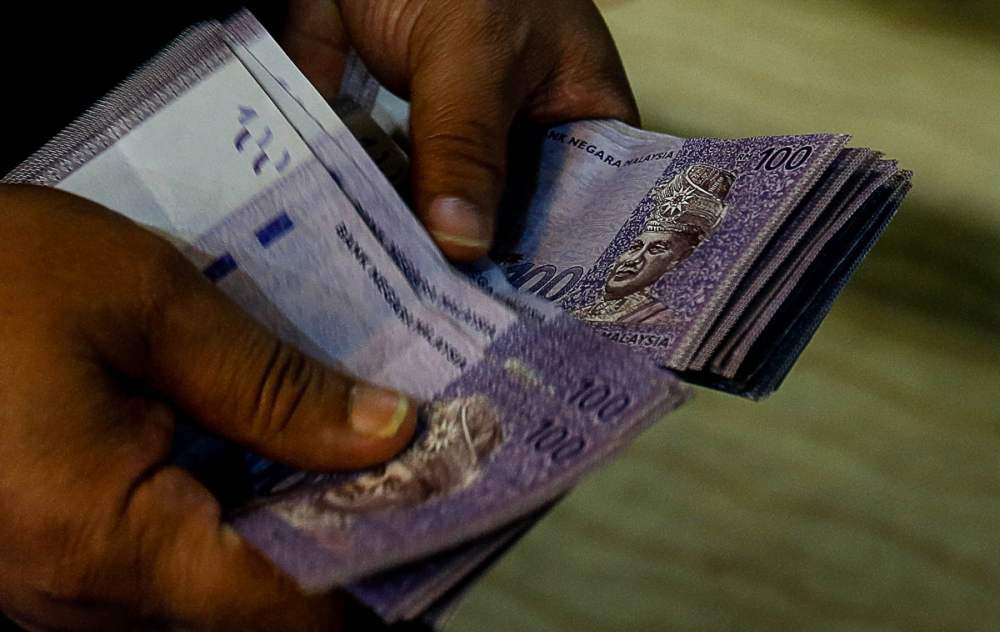KUALA LUMPUR, April 5 — The ringgit is expected to bounce back amid volatility and unpredictable currency markets, said Juwai IQI Global chief economist Shan Saeed.
He said the US dollar is expected to further weaken in the coming quarters as the US Federal Reserve slashed its benchmark interest rate by a full percentage point to near zero and promised to boost its bond holdings by at least US$700 billion.
He said the Fed made such a move to save the US economy from the fallout from Covid-19.
“If you pick the latest issue of Forbes magazine, it clearly makes the point that the dollar is heading south.
“The question on investors’ minds is: Is the US dollar heading for tail-end risk?” he told Bernama TV in a telephone interview here today.
Shan, who is also Global player, was asked to share his insight about the ringgit and global macroeconomic outlook.
He noted that In the last 17 days, the US dollar has lost grounds against major currencies, as it depreciated against the British pound (by 6.95 per cent), Canadian dollar (by 2.83 per cent), Chinese yuan (by 0.70 per cent), and the ringgit (1.83 per cent)
In March this year, the Fed was reported to have purchased Treasury bonds—after 250 straight weeks without buying, while trying to tighten monetary policy—leading to speculation that quantitative easing (QE) 4 has started.
In simple layman’s term, Shan said QE is when the central bank injects new money into the economy by buying US Treasury bonds.
The Fed previously went through three phases of bond buying in 2013 and 2014, so QE4 would just be the latest phase.
“Markets believe that Fed wants to lower the dollar for the remaining quarters to provide a boost to the economic outlook which is heading for a deep recession.
“Markets are not very confident that Fed is going to pull off this time and the dollar is heading for tail-end risk,” Shan said.
He noted that Chinese yuan has moved from 6.92 to 7.15 in a span of 31 days.
“The movement of yuan largely reflects the currency market adjustments and intervention of central banks. It’s like a price war all around. All central banks want to keep their currencies low or in depreciating mode to spur growth and maintain the momentum in the economy as exogenous variables are making economies vulnerable to slow down,” he said.
Shan said the ringgit follows the movement of the Chinese yuan and oil prices outlook.
Since both are positive and in upwards direction, he said this rise led to the appreciation of the ringgit.
He said the oil market has seen its biggest fluctuation since March 5, 2020.
It went down by 50 per cent from a high of US$50 per barrel to as low as US$24 per barrel due to price war between the Organisation of the Petroleum Exporting Countries (OPEC) and OPEC plus members.
Shan noted that the current Brent crude price is up again and has appreciated 36 per cent in the last seven days after US President Donald Trump spoke to Russia and Saudi Arabia to cut production.
The consensus reached by major players was to reduce production by 15,000 barrels per day.
Saudi Arabia has requested an urgent meeting of OPEC to finalise the agreement to have production cuts by all members.
Asked what are the local factors that could lead to the appreciation of the ringgit, Shan acknowledged that Bank Negara Malaysia (BNM) had done a good job in sustaining the ringgit.
“BNM has done well so far in managing and keeping the ringgit stable so far. BNM still has a policy lever to bolster growth trajectory and can do when is required. Overall, BNM has maneuvered well in the financial markets,” he said.
Shan said he is optimistic that ringgit will move between 3.97 and 4.30 against the greenback in 2020 and maintain structural stability among ASEAN economies. — Bernama






















